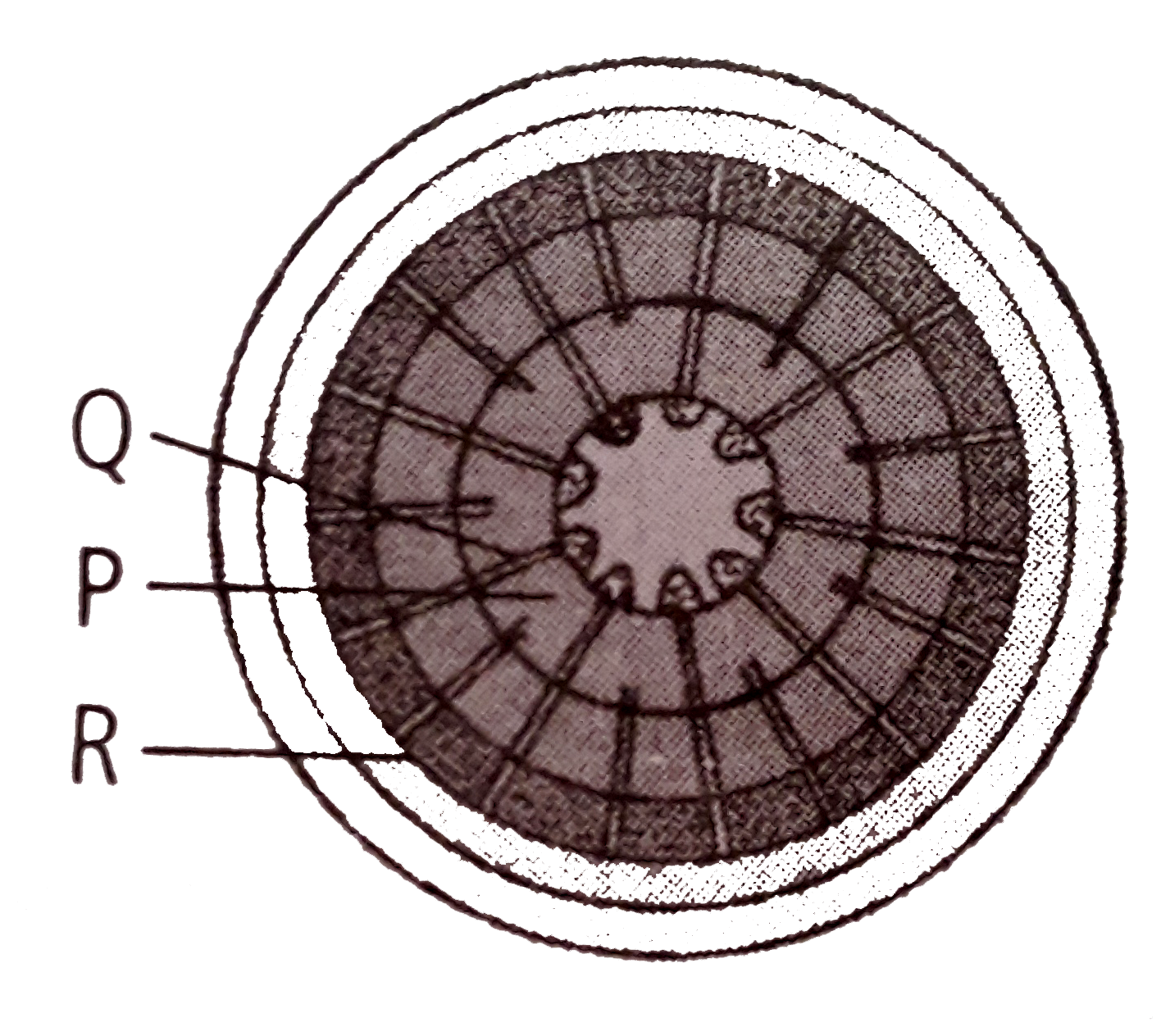During the secondary growth in the dicotyledonous stems the cork cambium gives rise to :
secondary xylem and secondary phloem
secondary cortex and cork
pith and medullary rays
multicellular hairs
The correct Answer is:B
Step-by-Step Solution:
1. Understanding Secondary Growth: In dicotyledonous plants, secondary growth refers to the increase in thickness or girth of the plant stem and roots. This growth occurs due to the activity of two types of cambium: the vascular cambium and the cork cambium.
2. Role of Cork Cambium: The cork cambium is a type of lateral meristem that arises from the de-differentiation of the cortical tissue. It plays a crucial role in the formation of protective tissues.
3. Products of Cork Cambium: The cork cambium produces two main types of tissues:
- Cork (Phellem): This is the outer protective layer that helps in preventing water loss and protects against physical damage.
- Secondary Cortex (Phelloderm): This is formed on the inner side of the cork cambium and consists of living parenchyma cells.
4. Evaluating the Options:
- Secondary Xylem and Secondary Phloem: These are produced by the vascular cambium, not the cork cambium. Thus, this option is incorrect.
- Secondary Cortex and Cork: This is the correct answer, as cork cambium indeed produces both secondary cortex (phelloderm) and cork (phellem).
- Pith and Medullary Rays: These structures are also formed by the vascular cambium, making this option incorrect.
- Multicellular Hairs: These structures are associated with the epidermis and not produced by the cork cambium, so this option is also incorrect.
5. Conclusion: The correct answer to the question is that during secondary growth in dicotyledonous stems, the cork cambium gives rise to secondary cortex and cork.
Final Answer: Secondary cortex and cork.
---
- Cork (Phellem): This is the outer protective layer that helps in preventing water loss and protects against physical damage.
- Secondary Cortex (Phelloderm): This is formed on the inner side of the cork cambium and consists of living parenchyma cells.
- Secondary Xylem and Secondary Phloem: These are produced by the vascular cambium, not the cork cambium. Thus, this option is incorrect.
- Secondary Cortex and Cork: This is the correct answer, as cork cambium indeed produces both secondary cortex (phelloderm) and cork (phellem).
- Pith and Medullary Rays: These structures are also formed by the vascular cambium, making this option incorrect.
- Multicellular Hairs: These structures are associated with the epidermis and not produced by the cork cambium, so this option is also incorrect.
Topper's Solved these Questions
- ANATOMY OF FLOWERING PLANTS BOOK - ICSECHAPTER - ANATOMY OF FLOWERING PLANTS EXERCISE - Test Your Progress (Fill in the blanks with appropriate words)
28 Videos
- ANATOMY OF FLOWERING PLANTS BOOK - ICSECHAPTER - ANATOMY OF FLOWERING PLANTS EXERCISE - Test Your Progress (State whether the following statements are true or false )
7 Videos
- ANATOMY OF FLOWERING PLANTS - PLANT TISSUESBOOK - ICSECHAPTER - ANATOMY OF FLOWERING PLANTS - PLANT TISSUESEXERCISE - REVIEW QUESTIONS (LONG ANSWER TYPE QUESTIONS)
20 Videos
Similar Questions
Knowledge Check

During the secondary growth in a dicotyledonous stem, the fusiform initials of vascular cambium give rise to which of the given labelled part?APBRCQDboth a and bDuring secondary growth in a dicot root, cork cambium is formed by the activity of
AcortexBhypodermisCpericycleDepidermis.Assertion: Secondary growth usually occurs in dicotyledonous stems.
Reason: The vascular cambium present between xylem and phloem possesses the ability to form secondary xylem and secondary phloem respectively.AIf both assertion and reason are true and reason is the correct explanantion of assertionBif both assertion and reason are true but reason is not the correct explanation of assertion.Cif assertion is true but reason is false.Dif both assertion and reason are false.
Cork cambium is a
View Solutioncork cambium is also called
View SolutionDuring secondary growth in a dicot root, cork cambium is formed by the activity of
View SolutionIn stem cork cambium originates from some
View SolutionWrite a brief accountof secondary growth in a dicotyledonous root.
View Solution
